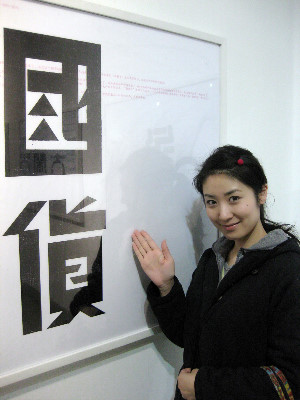
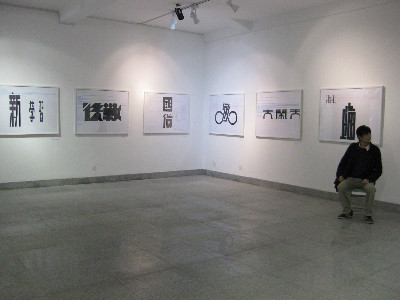
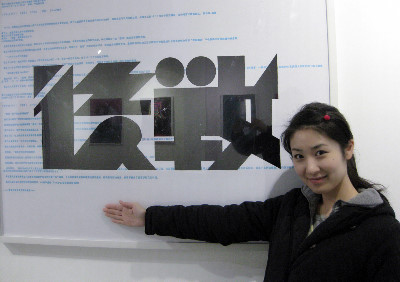
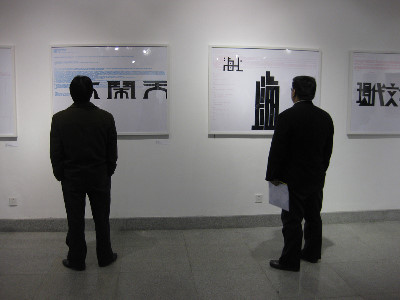
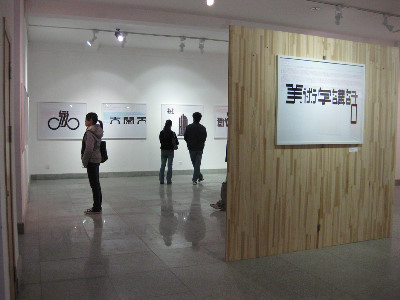
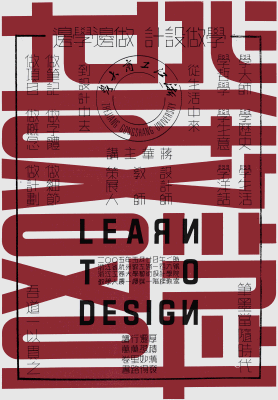
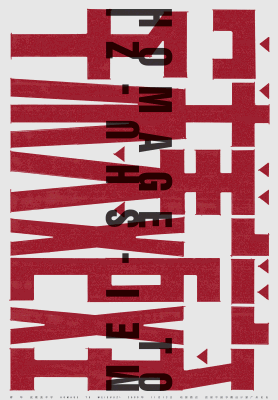
A research project by Jiang Hua, CAFA, Beijing
This is a general investigation of the Chinese modern Meishuzi (美术字) from the 20th century, including its historic preparation, the reason why it appeared, its method, logic and influence. The author used the modern Meishuzi as an important position to clarify the multiple clues of the development of the modern Chinese characters and its unique method. It brought up many basic problems of the Chinese character design. This article is the first one to put the Chinese modern Meishuzi into the dialogue of international typography. The author started the research from the mode of the Chinese modern typography. Which kind of creative mode the Chinese typography that is different from the Western character should have? As one of the most basic issues of visual communication, the discussion about typography would lead to design method problem under the context of Chinese character.
The article first defined the basic concept of modern Meishuzi and also discussed its important meaning that was ignored before. Besides, it talked about its relationship with modern Chinese typography. Then, the article described the historical preparation and the background, for example, classical Meishuzi, the development of printed typography and the calligraphy’s tendency to typography etc. While the gene in the Chinese characters, its construction structure and the writing tradition decided the “expressive” characteristic and “poetic” structure of the typography, which also proved that Chinese modern typography cannot use Western typography mode directly and this became the basic design logic of modern Meishuzi. In the main body of the article, the author discussed the wide space for the development of the modern Meishuzi since it is between printed type and calligraphy and its necessary choice, which decided the “organic” characteristic of Chinese typography. At the same time, the author talked about the modern method of Chinese typography—the general situation of modern Meishuzi, improvement in practice, design group and creation direction, especially the different practice of Chinese typography pioneer in the early days and the relationship between modern Meishuzi as a media and the enlightenment of Chinese society. Finally, the author tried to rethink the rationality of Chinese typography mode and its limitation through talking about the social situation of modern Meishuzi after the 1950s’ and the problems and situation of typography field in the 1980s’.
Through research, the author thought the modern Meishuzi was the modern typography of Chinese style grown up in the unique social historical situation with Chinese characters as context according to its originality, design method and way of expression. It is a continuity of Chinese writing tradition and design logic in the printing era. Based on the practice, the author revalued important typography document, rediscovery the logic and mode of Chinese typography to get the concept and method of Chinese typography, through which to prove modern Meishuzi has became important design resource we cannot ignore today. The contribution of the modern Meishuzi to the construction of modern Chinese typography knowledge and system would lead to the rethinking about the unique progress of the modern Chinese typography and its modernity.
 Jiang Hua (蒋 华) is a designer, researcher, critic and curator based in
Beijing, he is also a partner of OMD Contemporary Design Terminal, OMD
is a creative team with high innovation spirit and based on
multidiscipline. He studied Chinese painting, calligraphy &
seal-cutting since childhood. Since 1998, he began to be absorbed in
the study of Chinese typography. 1996-2006, he taught graphic design
in the Communication Arts Faculty of Ningbo University for 10 years.
In 2009, he obtain a PhD. degree in Central Academy of Fine Arts
(CAFA), and then, he became the lecturer in CAFA.
1999-2008, he is the curator of Ningbo International Poster Biennial.
It has been held 5 times with great success since 1999, the biennial
has been a bridge that connects Chinese graphic design and the world.
he is also the curator of TYPO100: International Poster Exhibition and
No Paper: Experimental Poster Invitational Exhibition. 2008-2009, he
became one of the curators of Social Energy: Contemporary
Communication Design from the Netherlands.
Jiang Hua received many important awards. He's works, interviews, and
writings have been featured and published in many publications such as
IDEA, Typotecture, Graphis, Etapes, Novum, Creative Review, etc. Jiang
has edited and designed many books. He also exhibited his works in
such biennials/triennials/invitational exhibition as from Ningbo,
Hangzhou, Hongkong, Toyama, Seoul, Warsaw, Rzeszow, Brno, Trnava,
Kharkov, Moscow, Chaumont, Essen, Mexico, etc.
In 2006, he became a member of AGI (Alliance Graphique Internationale).
Jiang Hua (蒋 华) is a designer, researcher, critic and curator based in
Beijing, he is also a partner of OMD Contemporary Design Terminal, OMD
is a creative team with high innovation spirit and based on
multidiscipline. He studied Chinese painting, calligraphy &
seal-cutting since childhood. Since 1998, he began to be absorbed in
the study of Chinese typography. 1996-2006, he taught graphic design
in the Communication Arts Faculty of Ningbo University for 10 years.
In 2009, he obtain a PhD. degree in Central Academy of Fine Arts
(CAFA), and then, he became the lecturer in CAFA.
1999-2008, he is the curator of Ningbo International Poster Biennial.
It has been held 5 times with great success since 1999, the biennial
has been a bridge that connects Chinese graphic design and the world.
he is also the curator of TYPO100: International Poster Exhibition and
No Paper: Experimental Poster Invitational Exhibition. 2008-2009, he
became one of the curators of Social Energy: Contemporary
Communication Design from the Netherlands.
Jiang Hua received many important awards. He's works, interviews, and
writings have been featured and published in many publications such as
IDEA, Typotecture, Graphis, Etapes, Novum, Creative Review, etc. Jiang
has edited and designed many books. He also exhibited his works in
such biennials/triennials/invitational exhibition as from Ningbo,
Hangzhou, Hongkong, Toyama, Seoul, Warsaw, Rzeszow, Brno, Trnava,
Kharkov, Moscow, Chaumont, Essen, Mexico, etc.
In 2006, he became a member of AGI (Alliance Graphique Internationale).
Meishuzi is the special design methods of Chinese Typography, it means that Chinese graphic designer usually make typography without typefaces or fonts like western. Jiang Hua focus on this project for 5 years. The invitational exhibition and research publication about Project Meishuzi will launch in 2009.